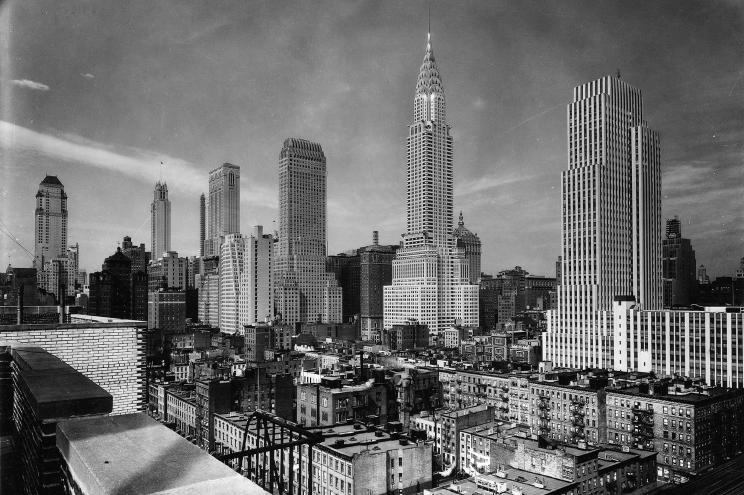When the 59-story Citicorp Center was built in 1977 in Midtown Manhattan, the majestic glass tower with its sharply sloped roof was one of the tallest buildings in the world.
It was also, it turned out, in grave danger of toppling over from a massive gust of wind.
The issues with the building — known as Citigroup Center or 601 Lexington today — might have gone undetected until disaster struck, were it not for one observant college student.
This tale and many others are relayed in “The 99% Invisible City: A Field Guide to the Hidden World of Everyday Design,” by Roman Mars and Kurt Kohlstedt (Houghton Mifflin Harcourt), including stories of some of New York City’s most fascinating and least known architectural and engineering feats and fiascos.
When architecture student Diane Hartley studied Citicorp Center for a school project in 1978, she calculated that “the structure was specifically vulnerable to quartering winds blowing in from the corners,” the authors write.

She contacted the firm of the building’s architect, Hugh Stubbins. The building’s chief structural engineer, William LeMessurier, checked her math and discovered how frighteningly correct she was.
“LeMessurier compared the velocity of winds the building could withstand with weather data and found that a storm strong enough to topple Citicorp Center hits New York City every 55 years on average,” the authors write, noting that he also found that a citywide blackout would “leave the tower vulnerable even in a less extreme storm scenario. For each year the Citicorp Center stood, LeMessurier figured, it stood about a one in 16 chance of collapsing. It was a catastrophic disaster waiting to happen right in the heart of Manhattan.”
As it happened, Hurricane Ella, the strongest hurricane on record, was forming in the Atlantic Ocean at the time.
The response was swift, like a mobilization out of a disaster film. LeMessurier and his team worked with Citicorp and the NYPD to quietly develop an emergency evacuation plan for 10 blocks around. Three different weather services monitored Ella, and 2,500 Red Cross volunteers were kept on standby.
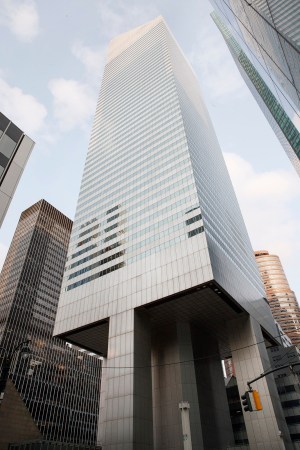
Still, LeMessurier and Citicorp lucked out. The city’s newspapers were on strike at the time, so they never reported the fiasco. Construction crews worked at night, in secret, to fix the issue and were gone by the time employees came to work in the morning. The story didn’t go public until 1995, when journalist Joe Morgenstern reported it in the New Yorker.
The 1920s development of the Holland Tunnel provided similarly dire concerns, as well as a “colossal engineering challenge.” While underwater tunnels weren’t new, the Holland was “exceptionally ambitious” for its time, and many were skeptical about whether engineers could determine how to vent all the poisonous car exhaust without killing all the drivers.
The project’s developers went to extraordinary lengths to ensure the safety of the tunnel that connects lower Manhattan to Jersey City, NJ.
“A test tunnel hundreds of feet long was enclosed inside an abandoned mine to try out ventilation strategies,” the authors write. “Additionally, a group of Yale University student volunteers spent hours in airtight chambers while researchers pumped carbon monoxide inside to determine human tolerances and side effects.”
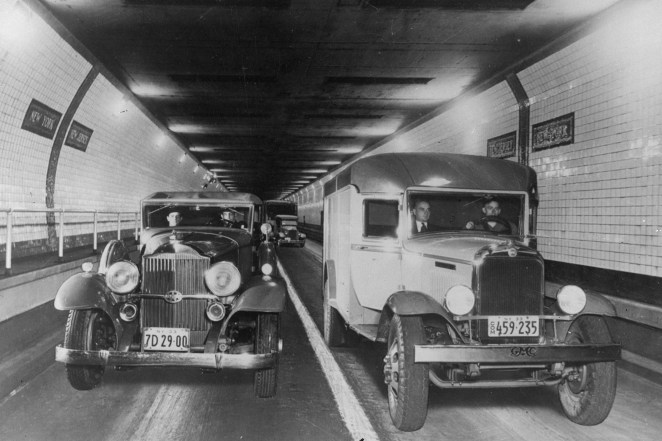
It was determined that to keep the tunnel safe, air would need to be pushed through at “nearly 1,000 cubic feet per second.” They accomplished this by installing four tall buildings that serve to this day as “concrete ventilation-shaft structures” around the tunnel: two on shore and two, over 100-feet tall, in the Hudson River.
“These four structures are equipped with dozens of huge intake and exhaust fans that can replace the entire volume of air inside the tunnel every minute and a half,” the authors write. “Thanks to an abundance of cautious engineering, the air quality in the tunnel would turn out to be better than it was on many surface streets in New York City. (To be fair, that is setting quite a low bar.)”
This sort of ingenuity defined and inspired many of the city’s legendary landmarks. The development of the Chrysler Building in the 1920s was spurred on by sheer competitive drive, as that building and the rising 40 Wall Street both sought to be the new tallest building in the world.
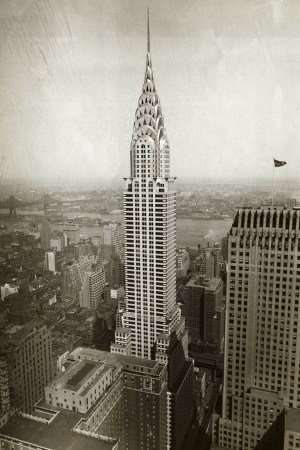
The fact that their respective architects, William Van Alen and H. Craig Severance, were ex-partners only drove each man’s will to win that much harder.
After Chrysler announced their building would be 820 feet high — besting the then-current tallest building, the Woolworth Building, by 28 feet — 40 Wall Street announced a height of 840 feet.
Chrysler responded by increasing their anticipated height, then 40 Wall did the same, and this went back and forth for a while.
But the Chrysler developers had a secret ace up their sleeve.
“As both towers went up, Van Alen had a team working on a secret weapon inside the Chrysler Building,” the authors write. “Bits and pieces of metal were hoisted up within the center framework of the building and then assembled to create the vertex. This 185-foot-long triangular spire destined to top the Chrysler Building was hidden inside until the other building reached its final height. At that point, the vertex was lifted up to the top of the Chrysler Building. The result was a 1,046-foot structure, the tallest in the world.”
That distinction, though, was short-lived, as the world had a new tallest building less than a year later: the Empire State Building. The book shows how the fates of many New York landmarks intersect in surprising ways.
It’s common New York lore that the destruction of the original Pennsylvania Station was an architectural tragedy. As it happens, though, its destruction may have saved another, equally revered landmark.
The original Penn Station, completed in 1910, was a Beaux-Arts architectural marvel brimming with natural light, one of New York’s most glorious structures.
“The grand architecture of the first Penn Station married historical building elements and modern industrial aesthetics, drawing inspiration from ancient sources and contemporary technologies,” the authors write.
“It was so impressive that it helped shame the Vanderbilts, America’s wealthiest family, into tearing down and rebuilding their own Grand Central Station, making it the landmark building it is today.”
But a combination of factors, including the decline of train travel and decades of use, resulted in a building adorned with broken windows and caked in grime and pigeon droppings that wasn’t paying for its own upkeep. This led to the decision in the 1960s to replace Pennsylvania Station to make way for the new Madison Square Garden.
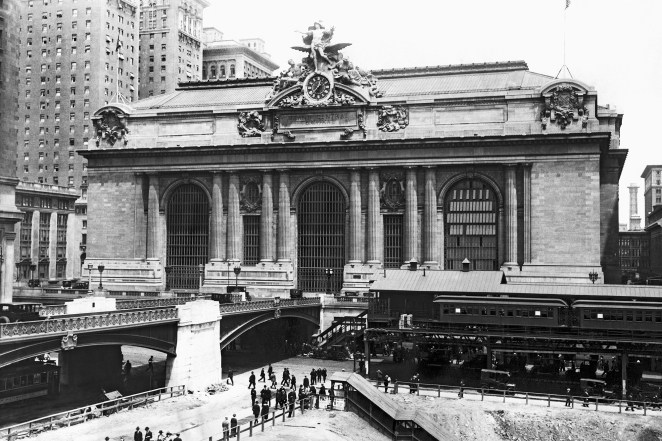
The new, current Penn Station, unveiled in 1968, was seen as a dismal failure, leading many involved to regret the replacement. Architectural historian Vincent Scully summed up the situation by decrying how in the past, “one entered the city like a god; one scuttles in now like a rat.”
But while the decision is regarded as one of the city’s worst ever, there were positive side effects. In addition to giving us the current Madison Square Garden, the regret over the old Penn Station may have saved Grand Central, which was also losing money by the 1960s.
Plans were being drawn to replace the grand dome with something new. But after the Penn Station debacle, New York City Mayor Robert Wagner created the Landmarks Preservation Commission, which was designed to preserve New York’s greatest architectural monuments. The commission stopped the demolition plan, which led to a lengthy lawsuit between the city and the building’s owners.
When the public learned of the plan, the uproar — on the heels of losing Penn Station — was so great that even Jacqueline Kennedy Onassis lent her public support, turning the effort to save Grand Central into a national story.
The suit went all the way to the Supreme Court, which ruled in favor of the city in 1978, saving Grand Central from extinction.
“It’s hard to say how much of a role the loss of old Penn Station played in saving Grand Central,” the authors write, “but there’s a case to be made that the demolition of the former helped prevent the destruction of the latter — as well as other buildings in and beyond New York City.”








